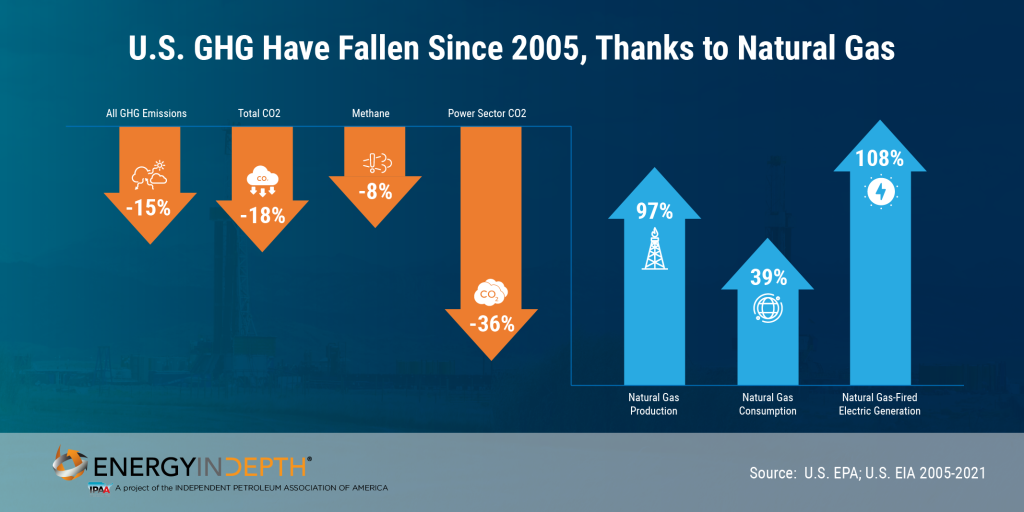Methane emissions continue to decrease in the United States, according to data in the Environmental Protection Agency’s 2023 draft Inventory of U.S. Greenhouse Gas Emissions and Sinks (GHGI).
Even as the industry sets production records, methane emissions from petroleum and natural gas systems have continued their downward trend –nearly 9 percent since 2005 and 4 percent since 2020 – and have decreased by more than 13 percent since 1990.

Methane emissions from natural gas systems decreased year-over-year, continuing a long-term decline trend which EPA explains is “largely due to a decrease in emissions from distribution, transmission and storage, processing, and exploration”:
“The decrease in distribution is largely due to decreased emissions from pipelines and distribution station leaks, and the decrease in transmission and storage emissions is largely due to reduced compressor station emissions (including emissions from compressors and leaks).”
The EPA adds that the decrease in methane emissions from petroleum systems is “due primarily to decreases in emissions from offshore platforms, tanks, and pneumatic controllers.”
The report showed individual system numbers also fell in each category of greenhouse gasses despite record growth.

Sustained Methane Reduction
There is an evident, timely need for more energy production to combat the global energy crisis, and the U.S. oil and gas industry has shown it is capable of producing the energy needed while decreasing its carbon footprint.
American producers’ innovation and investment in methane reduction has made the domestic industry a global leader in a year that the global energy sector’s methane emissions increased. An International Energy Agency forecast in 2021 said global oil demand is set to rise every year through 2026 as world oil markets rebalance post-pandemic. At the time, IEA Executive Director Dr. Faith Birol stressed that methane emissions must continue to fall in that same forecast:
“Minimising emissions from their core operations, notably methane, is an urgent priority. In addition, there are technologies vital to energy transitions that can be a match for oil and gas company capabilities, such as carbon capture, low-carbon hydrogen, biofuels and offshore wind. In many cases, these can help decarbonise sectors where emissions are hardest to tackle…”
Fast forward almost two years later, and the U.S. industry leads the way in reduction capabilities. In fact, a recent Institute for Energy Research report found evidence that U.S. production combined with above average environmental standards disproportionately reduces the environmental harms of oil and gas on a global scale.
The Environmental Partnership’s 2022 annual report similarly highlighted U.S. leadership and technological innovations in reducing emissions within the oil and gas industry, underscoring its commitment to producing the best methane mitigation practices across U.S. basins.
And there are opportunities for additional collaborative innovation to further boost reductions as Oil and Gas Climate Initiative (OGCI) executive committee chair Bjørn Otto Sverdrup said in a statement:
“Eliminating methane emissions from oil and gas operations is one of the quickest ways to meet the Paris Agreement targets and OGCI has already shown strong industry leadership on this critical issue. OGCI’s members have already collectively reduced upstream methane emissions by 40 percent since 2017.”
He added that OCGI – a coalition comprised of 12 of the largest oil and gas companies in the world – recognizes opportunities to utilize existing oil and gas technology to cut emissions and aims to reduce sector methane emissions by 2030 to meet Paris targets.
Bottomline: The world continues to need reliable, affordable energy and the EPA’s data show that the U.S. oil and gas industry is more than capable of meeting that demand while simultaneously helping the world reduce emissions.